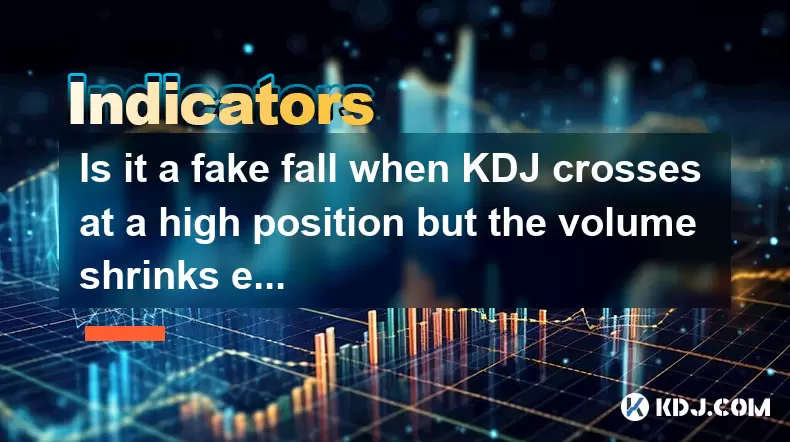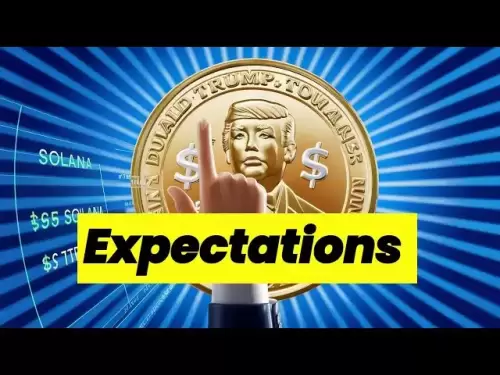-
 Bitcoin
Bitcoin $118300
0.35% -
 Ethereum
Ethereum $3758
6.10% -
 XRP
XRP $3.508
2.11% -
 Tether USDt
Tether USDt $1.000
-0.02% -
 BNB
BNB $751.6
3.09% -
 Solana
Solana $180.8
2.32% -
 USDC
USDC $0.9999
0.01% -
 Dogecoin
Dogecoin $0.2642
9.89% -
 Cardano
Cardano $0.8651
5.36% -
 TRON
TRON $0.3181
-0.30% -
 Hyperliquid
Hyperliquid $46.81
4.94% -
 Stellar
Stellar $0.4700
0.96% -
 Sui
Sui $3.938
4.38% -
 Chainlink
Chainlink $19.44
7.87% -
 Hedera
Hedera $0.2781
3.87% -
 Bitcoin Cash
Bitcoin Cash $548.9
8.91% -
 Avalanche
Avalanche $25.20
6.19% -
 Shiba Inu
Shiba Inu $0.00001540
5.34% -
 Litecoin
Litecoin $118.3
16.74% -
 UNUS SED LEO
UNUS SED LEO $8.978
-0.15% -
 Toncoin
Toncoin $3.295
4.26% -
 Polkadot
Polkadot $4.516
6.76% -
 Uniswap
Uniswap $10.66
6.62% -
 Ethena USDe
Ethena USDe $1.001
0.00% -
 Monero
Monero $327.2
0.14% -
 Pepe
Pepe $0.00001410
8.54% -
 Bitget Token
Bitget Token $4.955
1.73% -
 Dai
Dai $0.9998
-0.01% -
 Aave
Aave $328.8
4.63% -
 Bittensor
Bittensor $430.8
5.40%
Is it a fake fall when KDJ crosses at a high position but the volume shrinks extremely?
A KDJ high-position crossover with shrinking volume in crypto may signal a fakeout rather than a real reversal, requiring confirmation from other indicators like RSI or candlestick patterns.
Jun 29, 2025 at 07:21 pm

Understanding KDJ Indicator in Cryptocurrency Trading
The KDJ indicator, also known as the stochastic oscillator, is a momentum-based technical analysis tool used widely in cryptocurrency trading. It consists of three lines: the fast stochastic line (K), the slow signal line (D), and the J line which measures the divergence between K and D. Traders use this indicator to identify overbought or oversold conditions and potential trend reversals.
In the context of crypto markets, where volatility is high and price swings are frequent, interpreting the KDJ crossover becomes crucial. When both K and D cross above 80, it's considered an overbought zone, signaling that the asset might be due for a pullback. However, when such a crossover occurs with a significant drop in volume, confusion arises among traders about whether it’s a genuine reversal or just a fakeout.
Key Insight:
A KDJ high-position crossover with shrinking volume doesn’t automatically confirm a bearish reversal but should be treated with caution and verified using other indicators.Why Volume Shrinks During KDJ Crossover?
Volume plays a critical role in confirming any technical signal, including KDJ crossovers. In many cases, especially during strong uptrends, volume may naturally decrease as fewer sellers are willing to offload their holdings. This can result in a situation where the price continues to rise on low volume, even after a KDJ crossover at a high level.
A shrink in volume indicates weak participation from market participants. If bulls are still pushing the price upward despite declining volume, it could mean institutional buyers are accumulating without triggering panic selling. Alternatively, it could suggest that retail traders are losing interest while whales manipulate the price.
Important Note:
Low volume during a KDJ crossover at a high position often suggests low conviction behind the current price movement, increasing the likelihood of a fake move.How to Differentiate Between Real and Fake KDJ Reversals?
To determine whether a KDJ crossover at a high level accompanied by shrinking volume is a real reversal or a fakeout, traders must incorporate additional tools and techniques:
- Check candlestick patterns: Look for bearish reversal patterns like shooting stars, hanging men, or engulfing candles right after the crossover.
- Use moving averages: If the price remains above key moving averages (like the 20-day or 50-day MA), the uptrend may still be intact.
- Observe RSI behavior: The Relative Strength Index (RSI) can help validate whether the market is truly overbought or if it’s diverging from price action.
- Monitor order flow: Advanced traders can use depth charts and order book analysis to see whether large sell orders are appearing near resistance zones.
Critical Step:
Combine multiple signals before making a trade decision. Never rely solely on KDJ and volume data.Step-by-Step Guide to Analyzing KDJ and Volume Signals
Here’s how you can analyze a KDJ crossover at a high position along with shrinking volume in detail:
- Open your preferred charting platform (e.g., TradingView, Binance native tools).
- Apply the KDJ indicator to your chart with default settings unless you have customized parameters.
- Identify recent crossover points where K crosses above or below D at high levels (>80).
- Overlay the volume chart beneath the price chart to visually correlate volume changes with KDJ signals.
- Zoom into smaller timeframes (e.g., 1-hour, 4-hour) to spot early signs of fakeouts or real breakdowns.
- Compare with other indicators like MACD, RSI, and moving averages for confluence.
- Wait for confirmation candles before entering a trade based on these signals.
Essential Tip:
Use tight stop-losses when trading off KDJ and volume signals due to the unpredictable nature of crypto markets.Common Scenarios Where Fake Falls Occur
Fake falls are not uncommon in cryptocurrency markets, especially during accumulation phases or whale manipulations. Here are some typical situations where a fake fall might occur despite a high KDJ crossover and low volume:
- Whale dumping followed by buying: Large holders may temporarily push the price down to trigger stop losses, only to start buying again once panic selling ends.
- FOMO-driven rallies: After a prolonged consolidation phase, sudden bullish sentiment can cause sharp price surges without much volume initially.
- News-driven moves: Positive news might drive prices higher despite weak volume because of algorithmic trading or automated bots reacting instantly.
- Market manipulation via wash trading: Artificial volume can distort real volume readings, making it appear as though there’s no participation when in reality, trades are being faked.
Caution Required:
Always consider the broader market environment and possible manipulation tactics when analyzing KDJ and volume patterns.Frequently Asked Questions
Q: Can I ignore volume when using KDJ in crypto trading?
No, volume should never be ignored when interpreting KDJ signals. While KDJ provides momentum insight, volume confirms the strength of the move. Ignoring volume increases the risk of falling into fakeout traps.
Q: What timeframes work best for analyzing KDJ and volume together?
Daily and 4-hour charts provide reliable signals for swing traders. Shorter timeframes like 1-hour or 15-minute charts can offer more entries but are prone to noise and false signals.
Q: How do I know if a KDJ crossover is part of a fake fall?
Look for discrepancies between price action and volume. If the price makes a new high but volume drops significantly compared to previous peaks, it could indicate weakness and a potential fakeout.
Q: Should I always wait for D to cross K before taking action?
It’s safer to wait for confirmation through candlestick closes and volume consistency rather than acting immediately on the crossover. Patience helps avoid premature entries.
Disclaimer:info@kdj.com
The information provided is not trading advice. kdj.com does not assume any responsibility for any investments made based on the information provided in this article. Cryptocurrencies are highly volatile and it is highly recommended that you invest with caution after thorough research!
If you believe that the content used on this website infringes your copyright, please contact us immediately (info@kdj.com) and we will delete it promptly.
- Iron Maiden: Music Legends Celebrate 50 Years with Royal Mint Coin
- 2025-07-21 00:30:13
- BlockDAG, TIA, LTC: Unveiling the Latest Crypto Buzz
- 2025-07-21 00:50:12
- Ethereum Layer-2 Meme Coins: Little Pepe's Big Leap?
- 2025-07-21 00:30:13
- MoonBull, Crypto, and BOME Gains: Riding the Meme Coin Wave to 100x?
- 2025-07-21 00:50:12
- Bitcoin, ETH, and the Trader Target: Decoding the Crypto Landscape
- 2025-07-21 01:10:14
- Solana's TVL Growth: Riding the Cryptocurrency Wave
- 2025-07-21 01:10:14
Related knowledge

Advanced RSI strategies for crypto
Jul 13,2025 at 11:01am
Understanding the Basics of RSI in Cryptocurrency TradingThe Relative Strength Index (RSI) is a momentum oscillator used to measure the speed and chan...

Crypto RSI for day trading
Jul 12,2025 at 11:14am
Understanding RSI in the Context of Cryptocurrency TradingThe Relative Strength Index (RSI) is a momentum oscillator used to measure the speed and cha...

Crypto RSI for scalping
Jul 12,2025 at 11:00pm
Understanding RSI in the Context of Crypto TradingThe Relative Strength Index (RSI) is a momentum oscillator widely used by traders to measure the spe...

What does an RSI of 30 mean in crypto
Jul 15,2025 at 07:07pm
Understanding RSI in Cryptocurrency TradingRelative Strength Index (RSI) is a momentum oscillator widely used in cryptocurrency trading to measure the...

What does an RSI of 70 mean in crypto
Jul 13,2025 at 06:07pm
Understanding the RSI Indicator in Cryptocurrency TradingThe Relative Strength Index (RSI) is a widely used technical analysis tool that helps traders...

Does RSI work in a bear market for crypto
Jul 16,2025 at 01:36pm
Understanding RSI in Cryptocurrency TradingThe Relative Strength Index (RSI) is a momentum oscillator used by traders to measure the speed and change ...

Advanced RSI strategies for crypto
Jul 13,2025 at 11:01am
Understanding the Basics of RSI in Cryptocurrency TradingThe Relative Strength Index (RSI) is a momentum oscillator used to measure the speed and chan...

Crypto RSI for day trading
Jul 12,2025 at 11:14am
Understanding RSI in the Context of Cryptocurrency TradingThe Relative Strength Index (RSI) is a momentum oscillator used to measure the speed and cha...

Crypto RSI for scalping
Jul 12,2025 at 11:00pm
Understanding RSI in the Context of Crypto TradingThe Relative Strength Index (RSI) is a momentum oscillator widely used by traders to measure the spe...

What does an RSI of 30 mean in crypto
Jul 15,2025 at 07:07pm
Understanding RSI in Cryptocurrency TradingRelative Strength Index (RSI) is a momentum oscillator widely used in cryptocurrency trading to measure the...

What does an RSI of 70 mean in crypto
Jul 13,2025 at 06:07pm
Understanding the RSI Indicator in Cryptocurrency TradingThe Relative Strength Index (RSI) is a widely used technical analysis tool that helps traders...

Does RSI work in a bear market for crypto
Jul 16,2025 at 01:36pm
Understanding RSI in Cryptocurrency TradingThe Relative Strength Index (RSI) is a momentum oscillator used by traders to measure the speed and change ...
See all articles

























































































